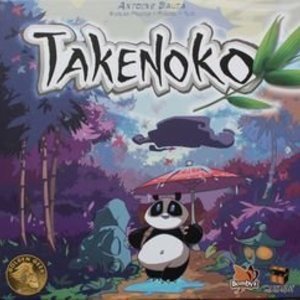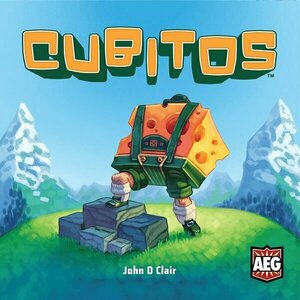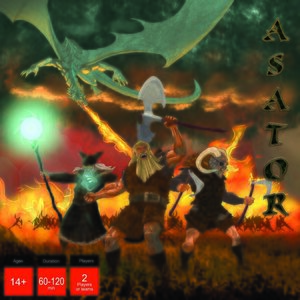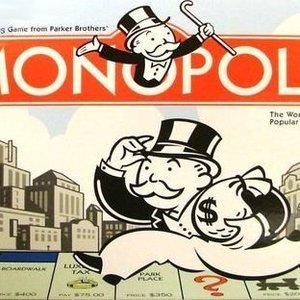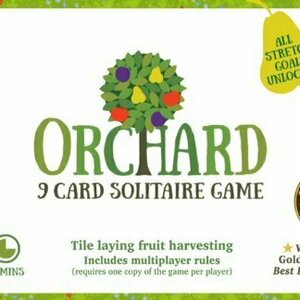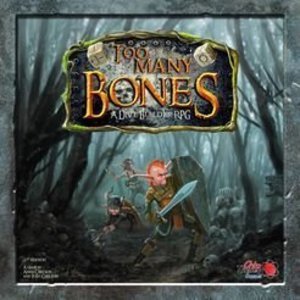
Too Many Bones
Tabletop Game
Too Many Bones comes loaded for bear by breaking into a new genre: the dice-builder RPG. This game...
Boardgames DiceRPGgame
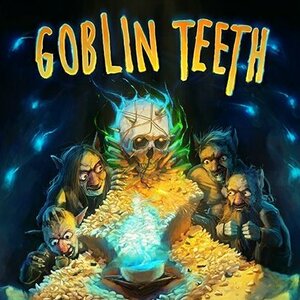
Goblin Teeth
Tabletop Game
In deep dark we live. It cold, it damp, but home to fancy emerald, yummy worms, and other lovely...
The Marinated Meeple (1853 KP) rated Takenoko in Tabletop Games
Mar 14, 2018
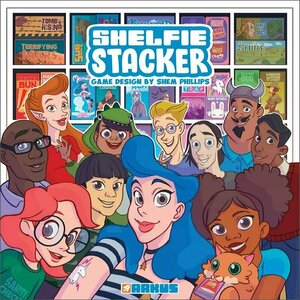
Shelfie Stacker
Tabletop Game
So you’ve picked up a new game, eh? Or did you finally get your eager hands on that expansion...
Purple Phoenix Games (2266 KP) rated Cubitos in Tabletop Games
Mar 17, 2022
Cubitos is a push-your-luck, dice building, racing game for two to four players. In it, players have runners that will be moving around a crazy race track, and another runner who keeps track of fans (the manager maybe?), and the first player’s runner to cross the finish line will be the winner! Now, managing movement and special abilities is where the game REALLY is, and it all boils down to which special dice are purchased and used, and whether Lady Luck will find favor or not. It’s a wild ride, so prepare your runner and let’s go!
To setup, place out one of the double-sided Racetrack boards, along with the Fan Track board. Runners for each player are placed at the Starting Line on the Racetrack board, and the other on the bleachers of the Fan Track. Each player receives a color-coded Player Board and nine gray starting dice. They receive a Phase Token to keep track of each phase in a round, and the starting player receives the Start Player Die. Each dice box is placed around the boards with the dice on top. All corresponding cards for each die type is placed by the dice box, and the game may now begin!
DISCLAIMER: We have adopted an unofficial variant/house rule that differs from the rules because we find it works better for us. During the phases where all players may play simultaneously we instead just have each player take a turn individually. -T
A turn in Cubitos is divided into two main phases with several sub-phases for each. During the main Roll Phase, players will first Draw dice from their personal Draw Zone (on the Player Board) and place them into the Roll Zone. Initially, players will have a hand size of nine, but that may be adjusted as the game progresses. Once the dice have been drawn the player then Rolls their dice. Every die face showing an icon is counted as a Hit, and every die showing a blank face is considered a Miss. All dice showing Hits are moved to the Active Zone of the board, and the player then decides if they wish to Push (their luck) and re-roll all the Misses in hopes of more Hits, or if they are done rolling. Once a player re-rolls their Misses, if the result is all Misses, the player Busts and must move ALL rolled dice to the Discard Zone on their board. However, players may continue to roll all Misses until they Bust or are content and stop.
The Run Phase then begins with players resolving their red die icons (crossed swords for attacks), and determining their other icons rolled for coins and movement. Feet icons (and certain dice special abilities) provide players with movement along the Racetrack board, and coins provide the player with purchasing power to buy new dice. Once a player’s Runner has landed on a reward spot on the board, the player receives the benefit and moves all dice used this turn to the Discard Zone on the Player board.
Every time a player Busts, or lands on a Fan icon on the Racetrack, the other matching Runner on the Fan Track board will move one spot along the track, and the player receives the benefits of the new space. These benefits are either an increase in hand limit of dice drawn, or more purchasing power in the form of credits. Reward spaces on the board could give players extra dice for free, allow players to remove dice from their collection, or even gain credits to be used at any time. The game continues in this fashion of each player taking their turns until one player crosses the finish line and wins!
Components. This box is chock full of tasty components that we all just adore. The boards and cards are all good quality and feature some fantastic art, and the custom dice are just so fun to handle. A truly ingenious use of folding arts is used when setting up all the dice boxes. Not only are they used in-game to remind players what icons are on each die face, but they also hold the dice during play, and store the dice in the box. I mean, triple duty dice boxes are where it’s at! Everything is super colorful and just a joy to play with each time. My one quibble is the very offensive block of cheese on the box cover. I am a big Chicago Bears fan, and seeing something so proudly displayed that even remotely resembles an homage to the Packers is such a shame to me. I really hope that wasn’t intentional, but I am also joking. Mostly.
The absolute best part about this game is the selection of action cards associated with each special set of dice. For example, the purple dinosaur dice could be paired with seven different cards, each with different abilities when the icon is rolled. Each color has a seven card deck, from which a card could randomly be used each game. The rulebook also offers 10 suggested combinations of cards, and also invites players to choose their own combos. This reminds me of a similar mechanic I first saw with the Dice Masters system, where each die’s faces could mean something completely different depending on the card associated with it. I loved that mechanic back then, and I do now as well.
I cannot believe I passed on this game for as long as I did. I mean, I like AEG-published games. We have reviewed John D. Clair games positively: Mystic Vale, with Custom Heroes and Space Base coming soon. Was it a subconscious dislike for the dumb cheese man on the cover? I am not too sure, but I am clearly glad to have it now. The cool dice. The interesting theme. The multi-use dice/card components. The fact they included both orange and purple dice. Am I into racing games now? The reasons are plentiful, and I just cannot wait for my next play of Cubitos. Maybe I can get my wife into it and it can be a staple in our rotation.
There are several other little rules that I did not mention here, but all in all I have had a blast every time I play Cubitos. I was certainly correct in wanting to add it to my collection, and having Josh teach Laura and me originally just adds a unique personal touch to the game for me. Creating lasting memories is a big reason I am so into board games in the first place, and I think Cubitos will hold a special place in my heart simply because I was able to play it with my best friends. They agree with me that this is a special game, and Purple Phoenix Games gives this a nonsquare 16 / 18. If you see this at your LFGS I highly recommend you pick up a copy. Don’t wait, like I did, because when you do get around to it, they just may be out of stock. And a suggestion: because the cheeseperson is wearing lederhosen, just refer to them as a great German friend. AND THAT’S IT. Go Bears.
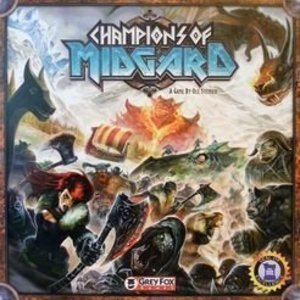
Champions of Midgard
Tabletop Game
Champions of Midgard is a middleweight, Viking-themed, worker placement game with dice rolling in...
Boardgames VikingGames
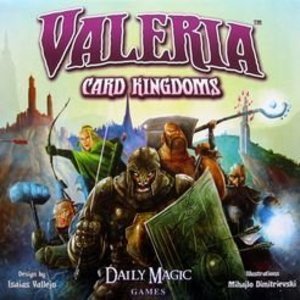
Valeria: Card Kingdoms
Tabletop Game
The land of Valeria is under siege by hordes of monsters. You and your fellow Dukes must recruit...
Purple Phoenix Games (2266 KP) rated Orchard: A 9 Card Solitaire Game in Tabletop Games
Mar 1, 2022
Orchard: A 9 Card Solitaire Game (simply Orchard from here on out) is a solo game where the player is attempting to harvest the most fruit from trees that are bred for high yield. As there are no players to play against, the player will instead compare their ending score with a table in the rulebook. Will the player’s game result in a “Pal-tree” score or will they score enough to be considered “Almost imposs-apple!”?
To setup, place the dice and Rotten Fruiteeple on the table. Shuffle the 18 cards, deal two decks of nine cards (two games worth), and choose a deck to play. Flip the first card over to start the orchard, shuffle the remaining cards and draw two into hand. The game is now setup and ready to begin!
Turns in Orchard could not be simpler: Play a Card, Place Dice, Draw a Card. From the two-card hand, choose one to be placed in the orchard with one very important rule: the newly-placed card must overlap another card in the orchard by overlapping matching tree types. So, a card can only be placed if the apple tree overlaps an apple tree, etc. More than one icon may overlap the existing card, but each icon must match types below it.
Once the new card has been placed, for each icon overlapped, a die matching the fruit type is placed on the icon. If this is the first time the tree has been overlapped, the die face is placed with value 1 showing. However, the die will increase in value each subsequent time it is overlapped (total die values of 1, 3, 6, 10). Therefore, when a card has been overlapped four times on the same icon, the maximum number of points has been reached for that icon. Should a player wish instead to forego any die placement and be unable (or unwilling) to place a card correctly, they may place any card, overlap an icon, and then add a Rotten Fruiteeple atop the mismatched icon. This spoils the fruit for the remainder of the game, so no further dice may be placed upon it, and also reduces the final score by three VP at game end for each token placed.
Finally, when the card and die have been placed, the player draws another card into their hand. When the final card has been played, or no further legal placements can be made, the game ends and the player totals up the dice values to arrive at their final score.
Components. This game is 18 cards of good quality, a bunch of custom dice, and two Rotten Fruit meeples. Everything is good quality and size, and it fits into a really cool sliding deck-box. The art, for me, is fine. The colors match fruits from the real world, and the dice match those color well enough too. I feel like different fruit choices could have been made to increase accessibility for our color-blind gamer friends. The plums and apples are both small and round (with an ever-so-slight different shape on the apple). I don’t know what other fruits would have been more appropriate – I’m not a botanist. Similarly, the dice are custom made with the pips looking like a plum or apple, and two sides of the dice showing a leaf icon. Perhaps in the interest of differentiation, instead of the leaves, the different dice colors could instead show the matching fruit style (if only the plum and apple looked differently enough). So instead of leaves, the red dice could show apples, the yellow dice could show pears, and the purple dice could show, I don’t know, eggplants? I am not color-blind, so these do not affect me, but it is something I have taken to commenting on as I review more and more games.
All in all, Orchard is a really good little game of overlapping and puzzling out next moves. The games are super-quick and engaging, and I always want to improve my score each time I play. When a game forces me to play again and again I feel it is a sign of a good game. I have plans to keep this one in its own special place where I can just grab it and go, instead of being dwarfed by my collection of much larger game boxes. If you are like me and pine for good solo play, then perhaps you should check out Orchard: A 9 Card Solitaire Game. The rules are light, game play is simple and fast, and it keeps drawing me in every time I look at the box.
Also let me know your highest score because I apparently am trash at this game, even though I really enjoy playing it. Have you scored in the top tier? Those must be some delicious fruits.
